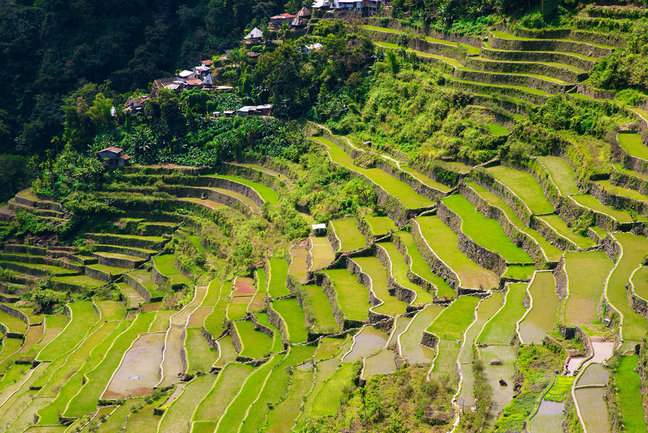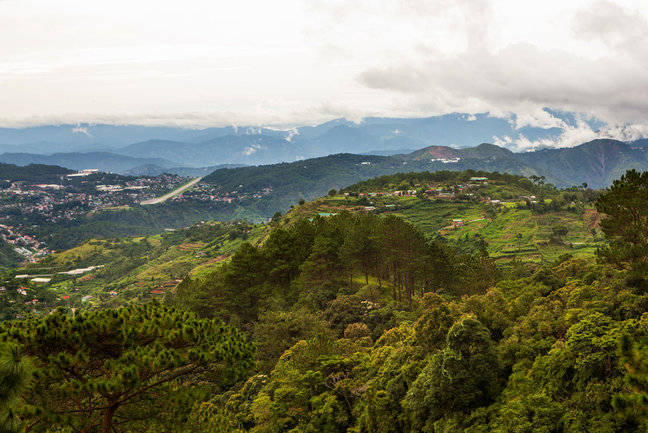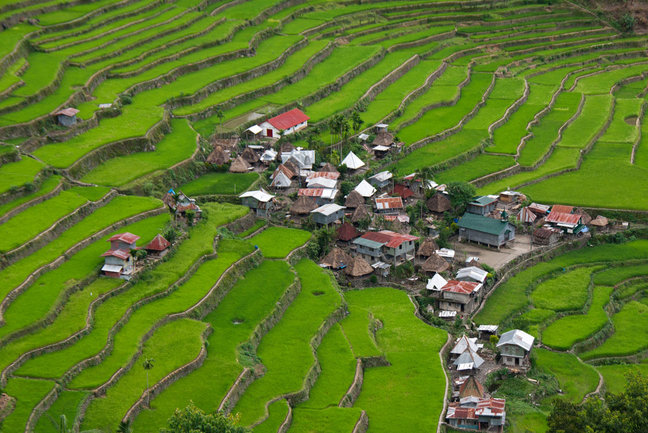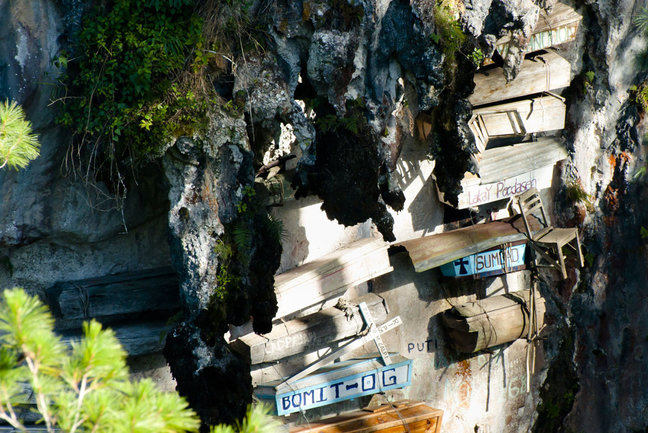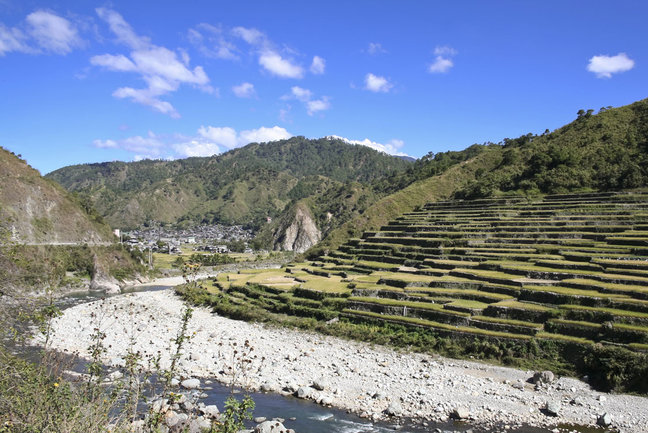Please enter your username and password to logon to the member pages

Banaue Rice Terraces Tour
Banaue Rice Terraces Tour Overview
Banaue Rice Terraces Tour Many things have been reputed about the Banaue Rice Terraces, but nothing written, photographed or said about them can really describe the sensation of viewing the terraces from a vantage point that gives a perspective of the magnitude of this 2,000-year-old engineering feat.The villages that dot the countryside preserve some vestige of the ancient cultures that once abounded in the hills and valleys of this region. Typical of these are the burial caves of Sagada and Mt Timbak. A journey to the Rice Terraces is a journey designed to experience the distinct natural and cultural Philippine heritage of the region.
Touring Style - a private tour with your own driver who also acts as your guide.
Best time for this tour: April to June.
Day 1: Manila to Banaue
Your guide will meet you in the lobby of your hotel for your Northern Roundtrip tour to the Banaue Rice Terraces.Visit a flower market in Dimasalang, where blooms and foliage of every colour and shape line the stalls and main thoroughfare of Dos Castillas. Skip on to nearby La Loma and see rows of carinderias or lechon food stalls dominating the roadside along Calavite Street. Lechons are suckling pigs that are roasted to perfection and served during fiestas and special household gatherings.
Continue north on the expressway, past the flat and fertile landscape of the Central Plains of Luzon. Depending on which month of the year it is, there are farmers harvesting or planting the rice fields. Water buffalos immersed in mud pools, herons foraging for food, and fields of green and gold that stretches everywhere are pastoral scenes that are most prevalent here. Enterprising townsfolk who engage in small backyard industry sell their wares along the roadside – such can be seen on the side streets of Nueva Ecija, where woven bamboo and nipa palms being used for interior walls and roof shingles of native huts are on display.
Cross the southern gateway of Cagayan Valley by zigzagging across the Caraballo Range through Dalton Pass, a 920-meter high precipice which was named after the American General James Dalton who led the siege against the Japanese forces during World War II. An expansive view of the Sierra Madre and Caraballo mountain ranges is visible from a lookout located atop a hill.
We begin our climb to Banaue as we reach the junction of Bagabag where the road from Banaue meets the main valley highway and runs northwest to Isabela. Halfway through is Lagawe, the capital town of Ifugao and home of the ‘People from the High Mountains’. Woodcarving, a craft which the Ifugaos are known for, can be observed here. We reach Banaue late in the early evening. Overnight at Banaue Hotel.
Distance and journey time: 466 km, 10.30 hrs
Day 2: Banaue Rice Terraces
Board a local jeepney to explore the breathtaking scenery and fascinating traditional culture of Banaue. By the roadside near the local church, a 10-storey house built on the mountain slopes shows the Ifugaos’ engineering skills and adaptability to its surroundings; also spot a tilapia pond and fighting cocks being bred nearby. Several twists and turns along the main road lead you to many rice terraces with ample stops for picture taking.
Our first glimpse of the magnificent terraces is best seen at Barangay Viewpoint, where a marker stands declaring the Banaue Rice Terraces a UNESCO World Heritage Area and an international historic civil engineering landmark. The terraces, believed to be over 2,000 years old, were built painstakingly and skilfully by ancient tribesmen in an area where level land is almost non-existent. Using primitive tools, shelves were carved from mountain slopes, its walls sealed together with clay. Each terrace is irrigated by a carefully-designed system of water channels that run from upper to lower paddies. When thick mists settle at the summit of these terraces, they conjure images of staircases leading up to heaven, thus the land came to be called as the ‘Stairway to the Sky’.
Another highlight of today’s trip is a short hike down Bangaan Rice Terraces where we can mingle freely with the villagers, and if the school is on, drop by the village school and observe the school kids as they go about their lessons.
Wind the day’s tour with a visit to the marketplace and visit some native handicraft store for interesting souvenir finds.
Day 3: Banaue to Sagada
Drive inland on the mountain trail of Mt. Polis, snaking through a narrow highway bordered with a thick undergrowth of moss-laden forest trees and shrubs, until we reach Bay-yo, our first Bontoc village. The rice terraces here are lower in height, its walls strengthened with stones taken from the river. In between rice cycles, the fields are planted with sweet potatoes and vegetables. Small thatched-roof huts where extra harvest and other farm supplies are kept, mark the mountain slopes near the fields.
A short visit to the Bontoc Museum will provide us with an insight into the lifestyle of the Igorots, the native settlers of Bontoc and the fiercest head-hunters of all mountain tribes. The museum contains an interesting collection of pictures, old maps, and artefacts of the mountain tribes in the region.
Moving farther on, an hour’s drive away is the limestone valley of Sagada. Sagada is best known for its unique burial practices; the dead are placed in coffins made from pine wood and buried in caves or lodged between ridges and hollows of limestone cliffs, thus the name, ‘hanging coffins’. One such burial cave which will be visited is Lumiang Cave, a sacred burial ground where ancient pinewood coffins can be seen. Before leaving the village, drop by the Sagada Weaving House where hand-woven products are made by the local womenfolk who engage in hand-loom weaving.
Overnight at Masferre Inn.
Distance and journey time: 200 km, 8.30 hrs
Day 4: Sagada to Baguio
Travel along Halsema Highway towards the province of Benguet, the last leg of our journey. At Kilometre 50 in Bayangan, we stop and gaze at the rows upon rows of terraces planted with vegetables. From our lofty height of 7,400 feet, the view is as stunning as the rice terraces of Banaue.
Beyond the vegetable fields lies La Trinidad, the capital town of the province. If Benguet is known as the ‘Salad Bowl of the Philippines’, La Trinidad is the ‘Strawberry Fields of the Philippines.’
Travel past La Trinidad, until we enter Baguio City, the only city of Benguet. Baguio was first developed by the Americans as their ‘rest and recreation’ city in the 1900s. A tour of this city highlights many of its parks and gardens that are abundant with flowers and pine trees and pleasant hiking trails. Drive by Camp John Hay, a former U.S. military recreation camp which also features a Jack Nicklaus-designed golf course, Wright Park, which has a riding field where one can rent a horse and ride around a track or follow specific trails, the Mansion House which is the summer residence of the President of the Philippines, and Mines View Park where you can enjoy a fine view of the surrounding hills. Roll on towards the city proper, catch a glimpse of the Baguio Cathedral that sits atop Mount of Mary Hill, and go past Burnham Park which has an orchidarium, a boating lake, a parade ground, and several kiosks and restaurants.
Finally, cap the day’s tour with a visit to the Public Market, one of the most colourful marketplaces in the country. This is where the mountain people come to buy and sell. There are sections selling meat, fish, fruit, and fresh vegetables; other sections offer rice, fresh tobacco, food preserves, shoes, and clothes. You will also find native handicrafts, textiles, bag, brooms, blankets, and woodcarving.
Overnight in Baguio.
Distance and journey time: 160 km, 5.30 hrsDay 5: Baguio to Manila
On our last day of the journey, return to Manila through Kennon Road, the oldest road system in the Cordilleras that was built by the Americans in 1903. Cross-crossing our way through many hairpin bends, go past the Lion’s Head, a massive sculptured limestone li-on, which has become a landmark that is synonymous to Baguio. Farther down is Bridal Veil Falls, which has a natural pool at its base. Reach Pangasinan by mid-morning and stop at Villasis Public Market, where tons of vegetables from neighbouring provinces including Benguet, are being sold at wholesale prices. Observe how buyers haggle at prices and see the variety of native fruits and vegetables on display.
Make one final stop in the town of Bacolor, one of the towns that were hard hit by lahar flows from the eruption of Mt. Pinatubo in 1991. The area was once a desert wasteland of ash and sand, buried homes, churches, and buildings. Few reminders of the destruction are seen today, except for San Guillermo Church, which still stands half-buried in lahar.
Moving fast on the North Expressway, the landscape is transformed from wide open spaces to homes, buildings and warehouses standing cheek by jowl along narrow streets, signifying the end of our 5-day journey. Arrive in Manila in the early evening to continue with your Philippine adventure.
Distance and journey time: 245 km, 4 hrs

